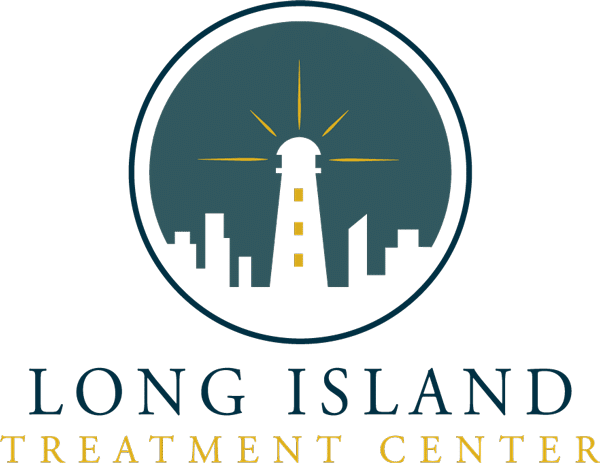An addiction intervention is a meeting you and several others conduct with an addict to confront them about their behavior.
The goal is to help the addict see the impact their condition has on their own life and the lives of those around them so that they recognize the need for treatment.
Read on to learn more about conducting successful interventions.
Table of Contents
- Understanding the Need for Interventions
- The Goal of an Intervention
- Components of an Effective Intervention Near You
- Choosing the Right Intervention Team
- Strategies and Approaches to Interventions
- Possible Challenges and Barriers
- Post-Intervention: Next Steps
- The Role of Treatment Centers in Interventions
- Conclusion
Understanding the Need for Interventions
When discussing addiction, it’s important to understand the complexity of the matter. Addiction isn’t simply a weakness or moral failing. It’s a byproduct of social, genetic, and psychological factors that all play a part in making addicts behave the way they do.
One of the biggest issues with addiction is that addicts often resist treatment for several reasons. Firstly, some addicts are in denial and don’t believe they have a problem.
Other addicts realize their condition but are reluctant to start treatment due to fear of withdrawal symptoms and the social stigma of rehab.
This is why having an intervention is key. Not only do interventions let addicts see the impact of their behavior on their quality of life and the need for change but they also reveal the effect their behavior has on their loved ones.

The Goal of an Intervention
If you want to conduct a successful intervention, you should first know an intervention’s objectives. Any intervention has three primary goals, namely:
Making It Clear to the Individual That They Have a Problem
The most important goal of interventions is to help a person take the first step on their road to recovery from addiction. This step is to realize that they have a problem that needs fixing in the first place.
In some cases, an individual is aware that they have an issue, but they don’t grasp the full severity of it. They in turn don’t see that they need to make a fundamental change in their life.
It’s the interventionists’ job to make the full scope of the problem clear.
Encouraging Voluntary Admission Into an Addiction Treatment Center
Once the person realizes that their struggle with addiction is severe, the next goal of interventions is to encourage this individual to voluntarily seek help at an addiction treatment center.
The key word here is “voluntarily.” Forcing someone to start a treatment program at a rehab facility isn’t a good idea because they’re likely to drop out and revert to their destructive habits.
On the other hand, those who pursue treatment because they’re convinced they need it will make full use of the professional staff and services at the treatment center.
Facilities like Long Island Treatment Center offer patients an array of resources to put them on the fast track to recovery.
Demonstrating a United Front of Care and Concern From Loved Ones
When people fall into the downward spiral of addiction, they become detached from those around them and behave like they have nothing to lose. This mindset makes them less likely to take action to better their lives.
If you have a friend or family member who’s in this unfortunate position, you can help them snap out of it during the intervention.
A great way to do so is to show them that you and all their other friends and family members are worried about them and concerned about their well-being.
This reminder that they have many people who care about them and want them to get better will make them more likely to not want to let themselves and their loved ones down.

Components of an Effective Intervention Near You
All interventions consist of three main stages:
- Planning
- Execution
- Follow through
Here’s what should happen in each stage to stage a successful intervention:
Planning
The first step is to plan the intervention. Your first task is to do your research and gather information to support your argument. This information could be regarding the dangers of the drug your loved one is using.
It could also be information about the changes in your loved one’s life since they started abusing a drug. Such information will be useful to make it clear to them the negative impact their addiction has had on them.
Planning an intervention also involves assembling a team. The team can be a group of family and close friends along with a professional interventionist to moderate.
Finally, the team should agree on specific consequences with which to face the subject of the intervention if they don’t pursue treatment after the intervention.
Execution
Now it’s time to put your plan into action.
All intervention team members should be present to relay a structured message. It’s important for everyone involved to control their emotions and not react in any way that could make the intervention backfire.
Follow Through
After you’ve conducted the intervention, what comes next? The answer depends on the intervention’s outcome.
If your loved one accepts that they have a problem and agrees to pursue treatment, the whole intervention team should do their best to facilitate the process. They should also support the individual throughout recovery.
Alternatively, if the intervention doesn’t go well, you should be ready to implement the consequences the intervention team agreed on.
Choosing the Right Intervention Team
Choosing a suitable team is critical to an intervention’s success. Here are the things to consider when assembling your team:

The Role of Professional Interventionists
The first thing you should do is consider hiring a professional interventionist.
Their role is to help build the intervention team and clarify each team member’s roles and responsibilities. They also help plan the intervention and moderate its execution.
Incorporating Family Members, Close Friends, and Significant Others
The core of the intervention team should consist of people who are close to the person in question such as family, close friends, and significant others.
These are the people most likely to induce the need for change in the person you’re holding an intervention for due to the strong emotional connection they have with them.
Considerations for Including or Excluding Certain Individuals
Another key aspect to keep in mind is to avoid including people who won’t help and might make the intervention less likely to succeed.
For example, no intervention team members should have active addictions themselves. Including such people in the intervention will come off as hypocritical and take away from the intervention’s credibility.
You also shouldn’t include people who don’t get along with your loved one. Such people’s presence will automatically put your loved one in defensive mode and make them less likely to be receptive.
Additionally, people who are easily angered or frustrated can ruin an intervention.
Strategies and Approaches to Interventions
There are many ways to go about holding an intervention. These are the three main strategies:
Direct Approach
As the name suggests, taking a direct approach to an intervention involves being very blunt with your loved one. The message that they have a problem that urgently needs to be addressed should be clear and concise.
Indirect Approach
You can also take a more nuanced approach to interventions. Instead of confronting your loved one directly, you can engage them in discussions that make them realize their problem with addiction on their own.
Forcible Interventions
Forcible interventions are typically a last resort when the addict has been unwilling to seek help through several previous interventions.
A forcible intervention involves directly confronting the addict and admitting them into a treatment facility against their will.
Possible Challenges and Barriers
The biggest obstacle to a successful intervention is the person’s denial. They may stubbornly maintain that they don’t have a problem and that the intervention is pointless.
Their resistance may be a result of their fear of the social stigma surrounding rehab and the withdrawal symptoms they’ll face when they stop taking drugs.

Another challenge of interventions is that they tend to be emotional affairs. It’s difficult for the intervention team to control their emotions and they may react with intense anger or despair.
When this happens, it can worsen the situation and make the individual double down on their drug use.
Post-Intervention: Next Steps
Now that the intervention has happened, what’s next?
As mentioned above, one of an intervention’s core goals is to encourage voluntary admission into a treatment center. If the intervention has achieved that goal, you should immediately enroll your loved one at a suitable treatment facility.
This transition is a significant one. Therefore, all friends and family members should show the person unwavering support during this time to ensure that the transition is smooth.
Once your loved one is settled, you should continue supporting them throughout the journey of treatment, counseling, and therapy they’re embarking on.
The Role of Treatment Centers in Interventions
At Long Island Intervention Center, we work with professional interventionists to decide which form of treatment is best for each individual.
Additionally, we make the necessary resources available immediately after the intervention to ensure a smooth transition into treatment.
We also realize the effect addiction has on family members and friends and offer counseling services to them.
Conclusion
Addiction has destroyed millions of lives over the years. If you have a loved one who struggles with addiction, you can help them get their life back on track through a timely intervention.
To increase the chances of your intervention being successful, you should provide a supportive environment and consider seeking professional help when planning and executing the intervention.
Frequently Asked Questions (FAQs) About Interventions and Treatment
What can I expect during an intervention?
What if my loved one rejects treatment?
What will treatment look like?
References
- https://www.allaboutinterventions.com/the-complete-guide-to-hiring-a-professional-interventionist/
- https://health.clevelandclinic.org/is-addiction-genetic/
- https://www.cenikor.org/resources/fighting-the-stigma-of-drug-and-alcohol-rehab/
- https://americanaddictioncenters.org/withdrawal-timelines-treatments
- https://longislandtreatmentcenters.com/treatment/interventions/

